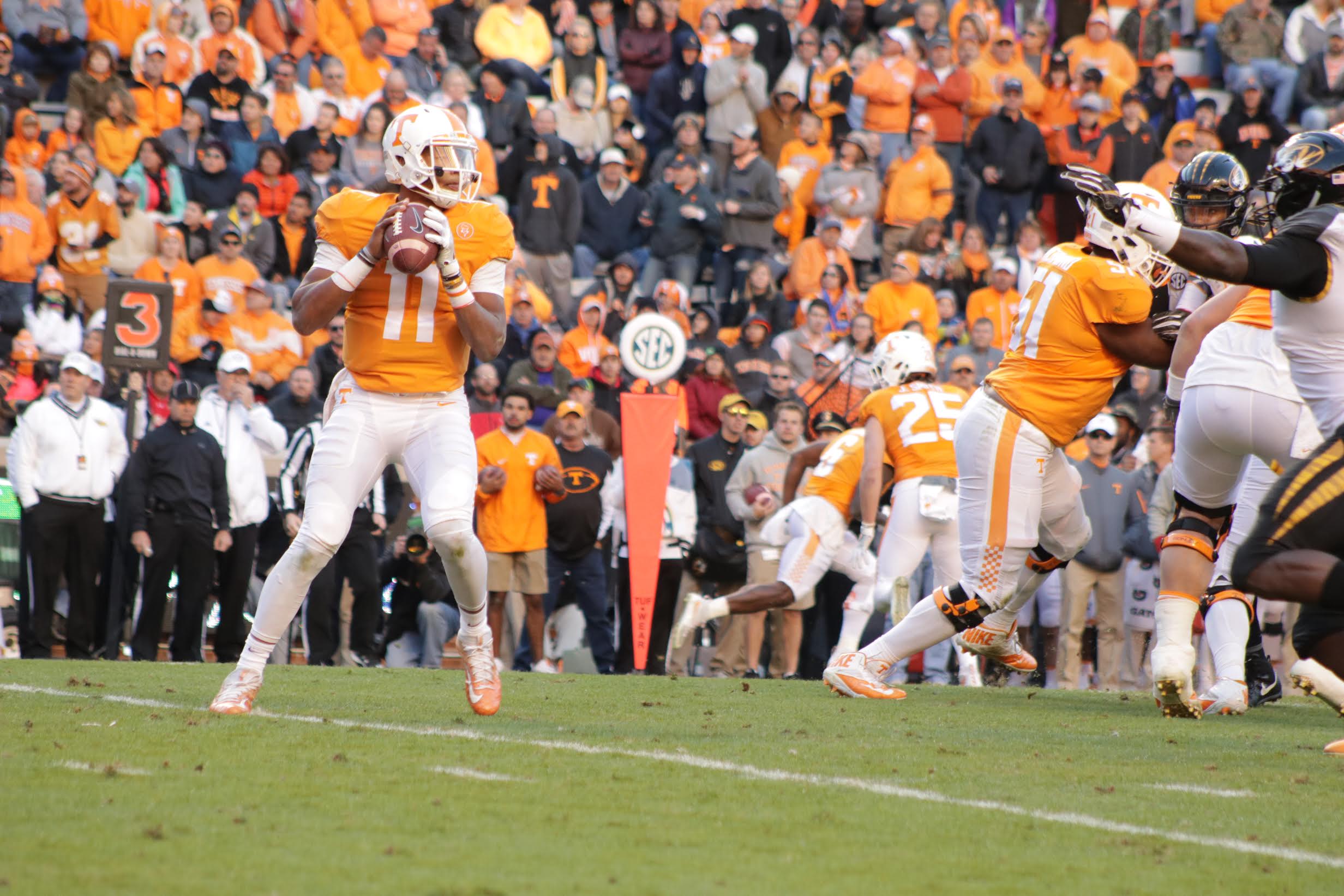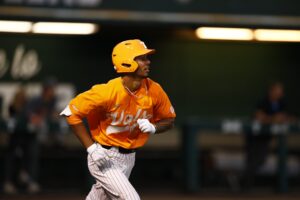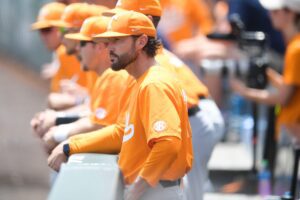Evaluating Josh Dobbs’ career at Tennessee
Josh Dobbs arrived in Knoxville four years ago as part of a program decimated by the Derek Dooley era. Four years later, Dobbs has helped rebuild Tennessee into an SEC East contender. Here are the numbers behind Dobbs’ four-year career as a Vol.

Tennessee quarterback #11 Joshua Dobbs looks for receivers downfield during the Vols' game against Missouri in Neyland Stadium on Nov. 19, 2016.
After a pair of burned redshirts, infinite mentions of his major by the media, an equal amount of miraculous comebacks and stunning collapses on the field and a Presidential endorsement from his head coach, the Joshua Dobbs era in Knoxville ended in late December after the Vols topped Nebraska, 38-24, in the Music City Bowl.
Before Quinten Dormady or Jared Guarantano usher in a new era for Tennessee football, it’s time to reflect on Dobbs’ career as he participates in the Senior Bowl and pursues a career in the NFL. While Dobbs will always remain a beloved figure in Volunteer lore, the quality of his career on the field is a hot topic for debate. Despite being the most non-controversial human being imaginable, Dobbs’ performance has polarized fans. On one end of the spectrum, he’s one of Tennessee’s greatest quarterbacks and a rare talent. On the other end, he’s viewed as a quarterback who can’t complete a forward pass.
As with most topics in life, the truth lies somewhere in the middle. At times, Dobbs dazzled with show-stopping scrambling and razor-sharp throws, but those highlights were juxtaposed with numerous head-scratching decisions and poor throws.
To discover how effective Dobbs has been over the past four seasons, I watched nearly every throw of his career, from his first career pass against Alabama in 2013, a dropped pass by Jonathan Johnson, to his final throw against Nebraska, an incomplete pass intended for Josh Malone.
Before embarking on this journey, expectations were understandably low, but once nearly every throw was dissected and every stat was recorded, the truth about Dobbs’ career was exposed.
As the old saying goes, “Men lie, women lie, Sean Spicer delivers alternative facts, but numbers don’t.”
Disclaimer: I did not find full footage of five games: 2014 vs. Missouri, 2014 at Vanderbilt, 2015 vs. North Texas, 2015 at Missouri and 2016 vs. Missouri. So not all 999 of Dobbs’ career throws are evaluated in this article.
The raw statistics
23-13 record, 614-999 (61.5 percent), 7,138 yards, 53 TD, 29 INT, 438 carries, 2,160 yards, 4.9 YPC, 32 touchdowns
Character
You won’t find a better representation for a football team than Dobbs. There are a number of reasons why the Aerospace Engineer has dodged controversy while playing the most scrutinized position at a premier program. Dobbs has gone through such extensive media training that he can speak for 15 minutes and say absolutely nothing. In addition, during a postgame press conference following a loss, you’ll never find him throwing teammates under the bus, which is part of the reason why his teammates revere him, along with his football character (Butchism alert). Dobbs was also omnipresent in the Knoxville community, which helped make him the consummate role model for kids.
Accuracy/Decision Making
The biggest area of criticism for Dobbs is accuracy, which is justifiable, although the numbers might refute those complaints.
- Behind: 179 accurate throws, 30 inaccurate throws, six drops (85.6 percent accurate)
- Short (0-9 yards): 238 accurate throws, 83 inaccurate throws, 27 drops (74.1 percent accurate)
- Intermediate (10-19 yards): 100 accurate throws, 74 inaccurate throws, eight drops (57.5 percent accurate)
- Deep (20+ yards): 60 accurate throws, 63 inaccurate throws, 15 drops (48.8 percent accurate)
- Overall: 577 accurate throws, 250 inaccurate throws, 56 drops (69.8 percent accurate)
Dobbs improved his accuracy each season, especially during the second half of his senior year, but while the stats suggest his reputation as a wildly inaccurate passer is unwarranted, there still remains healthy dose of truth in that statement. It’s important to note that Dobbs’ overall accuracy is inflated due to the sheer number of passes he threw nine yards in the air or less. Taking throws behind the line of scrimmage and in the 0-9 yard range out of the equation, Dobbs’ accuracy percentage plummets from 69.8 percent to 53.9 percent.
It isn’t abnormal for a quarterback’s accuracy to drop the farther he throws down the field. However, some disturbing trends popped their heads out when reviewing the tape. Against weaker defenses such as Tennessee Tech or Kentucky, Dobbs was superb on throws down the field. But that had more to do with the defense than Dobbs’ ability, as those aforementioned squads often failed to challenge wide receivers at the point of the snap, leaving them wide open more often than not. Against teams that played tighter coverage, Dobbs rarely displayed the ball placement skills to fit passes into rapidly closing windows. Furthermore, Dobbs rarely threw with precise anticipation or smooth touch, which is an essential skill for quarterbacks at the next level.
It was also apparent that Dobbs struggled with decision-making when facing more disciplined coverage. Tennessee loved to run dig routes when cornerbacks played off receivers, which is a fairly simple read for a quarterback to make. However, when the cornerbacks caught on to the Vols’ predictable offensive philosophy, Dobbs was forced into situations where he was forced to make the right decision instead of the pre-determined one. The results are shaky:
- Behind: Six touchdowns, two turnover worthy plays
- Short: 15 touchdowns, 15 turnover worthy plays
- Intermediate: 10 touchdowns, 19 turnover worthy plays
- Deep: 18 touchdowns, 16 turnovers worthy plays
Again, the farther the distance, the more prone quarterbacks are to inaccurate throws that might result in turnovers. However, Dobbs’ ratio is awfully concerning here in the intermediate to deep range (28 touchdowns to 35 turnover worthy plays). If an NFL defense eliminates underneath throws and forces Dobbs to challenge ball-hawk secondaries, I’m not positive Dobbs is up to the task.
Mobility
Dobbs is a dual-threat quarterback, which has become somewhat vogue in the NFL. There’s no question Dobbs possesses the ability to produce magic when forced to scramble, but that style of play isn’t sustainable in the NFL. More often than not, when Dobbs decided to run, he was keen on gaining every yard he possibly could. This resulted in a ton of unnecessary punishment, but surprisingly enough, Dobbs never missed a game due to injury.
In the next level, there’s no more important asset to a franchise’s success than a quarterback, which means teams will do anything to keep their face of the franchise healthy. Given Dobbs’ reckless nature when on the run—he only slid twice in the 32 games I reviewed out of a few hundred runs—teams won’t be as attracted to him.
Third-Down Passing
Third-down success rate can make or break a team’s season. While teams obviously prefer third-and-short situations, a quarterback who can turn third-and-longs into first downs often cashes the biggest checks. Dobbs is anything but money on third down, especially in long third-down situations. That’s largely accredited to Dobbs’ struggles with accuracy down the field, which often forced the Vols to throw behind the sticks in those situations. Of the 230 throws Dobbs attempted on third and fourth down/goal, 127 of them traveled past the sticks or in the end zone, good for 55.2 percent of the time. It isn’t a bad number, but again, that number is a tad inflated given Dobbs rarely threw past the sticks when facing third-and-long.
Best Career Performances
1). 2016 vs Florida
2). 2015 vs South Carolina
3). 2016 at Vanderbilt
Dobbs’ performance against the Gators this past season was his strongest given the circumstances. While he completed only 16-of-32 passes and threw two brutal interceptions, Dobbs also fell victim to five drops, including one in the end zone during the first quarter. By the game’s end, Dobbs had rallied the Vols from a 21-0 deficit by scoring five total touchdowns. All four of his touchdowns were longer than 20 yards and came in the face of pressure. In addition, three of them were three of the best throws of his entire career.
Best Throws
1) 75-yard touchdown pass against Kentucky (6:40 mark)
2) 9-yard touchdown pass against Oklahoma (3:19 mark)
3). Third-down conversion against Ohio (8:00 mark)
Verdict
Dobbs wasn’t a great quarterback, but he also was nowhere near terrible. More often than not, he was good enough to get the job done. However, the best way to describe Dobbs was that he was a tease. For all his brilliant moments, there was an equal amount of dumbfounding decisions. That, folks, is what inconsistency is all about. From one pass to another, you didn’t know if Dobbs was going to hit his target in stride downfield or deliver a bounce pass to a receiver right in front of him. Plus, given how mobile Dobbs is, the Tennessee offense should’ve been unstoppable, but his talent was rarely utilized consistently.
To transition to the NFL, Dobbs has a mountain to climb. It’s not impossible, but given his deficiencies as a passer, Dobbs will be a career journeyman backup at best.
Edited by Quinn Pilkey
Featured image by Ben Proffitt
Follow me @DavidJBradford1 on Twitter, email me at dbradfo2@vols.utk.edu for any questions.



